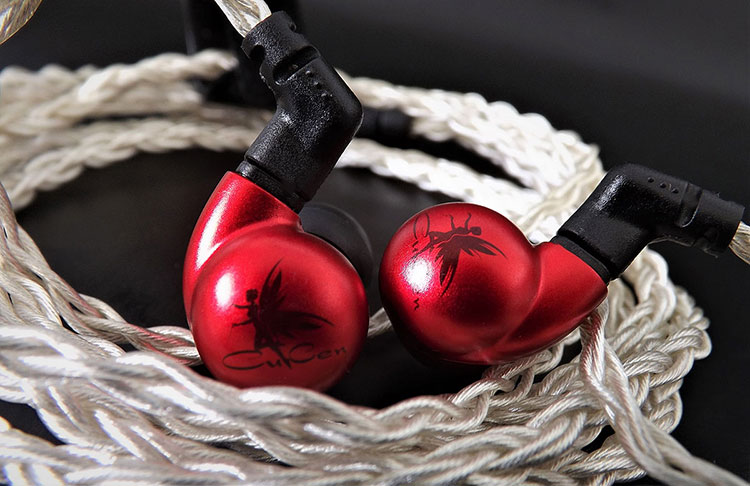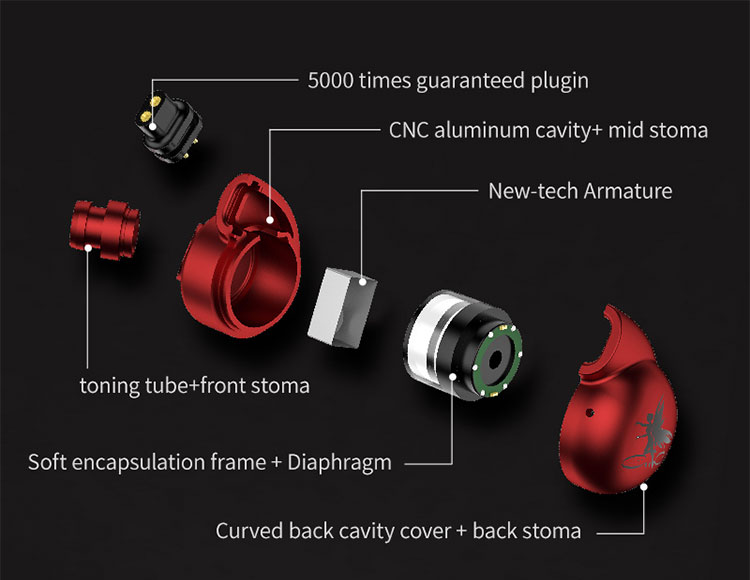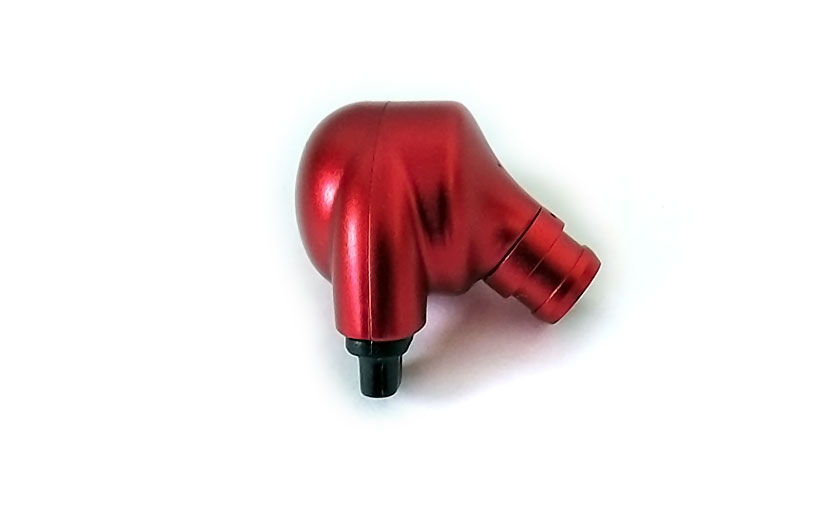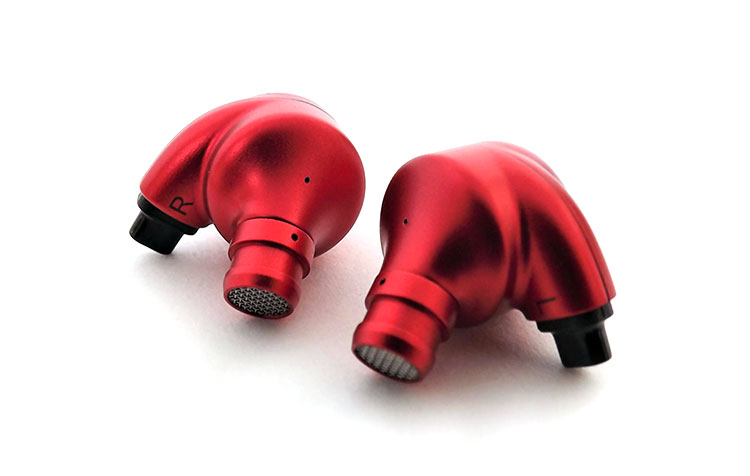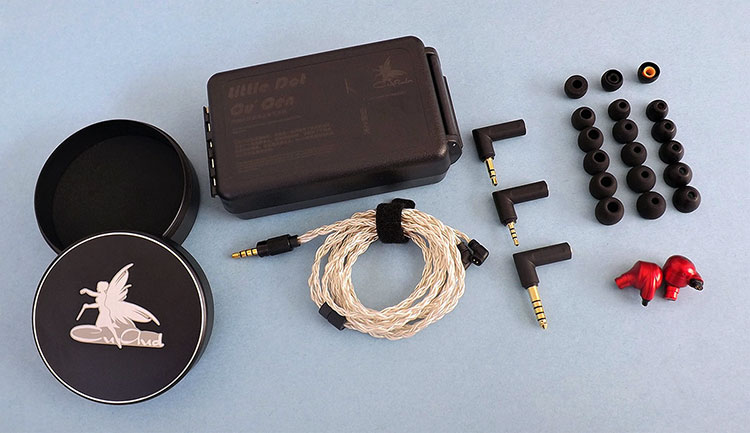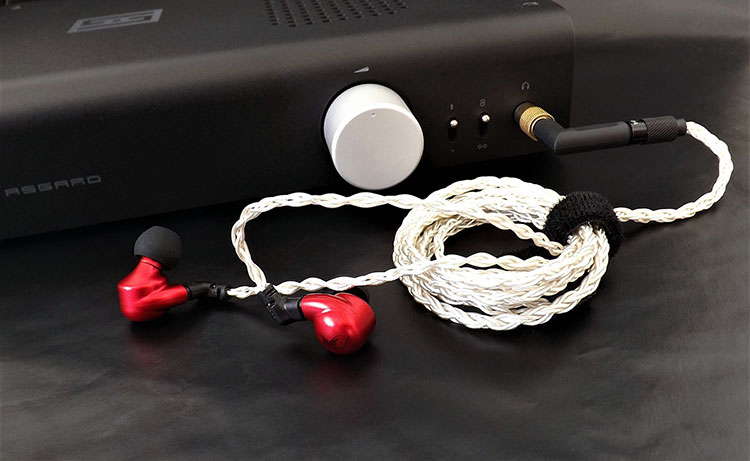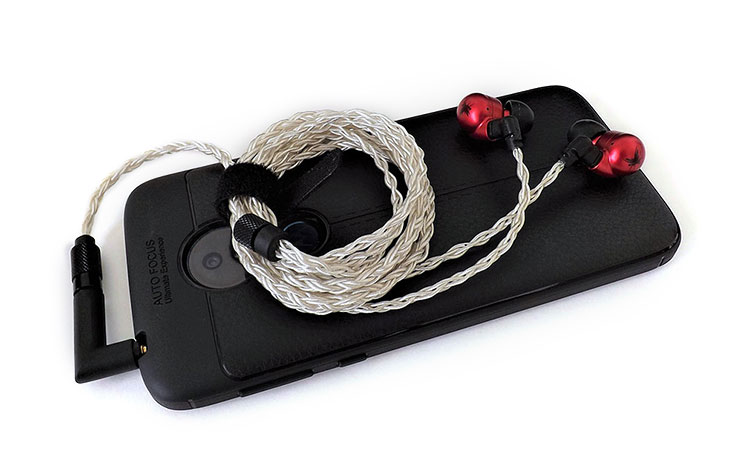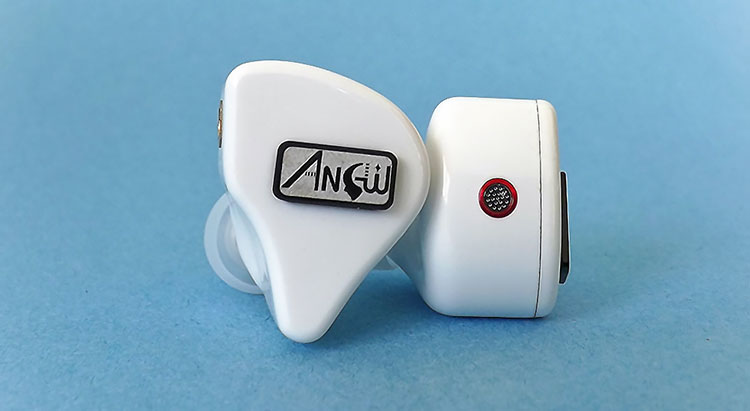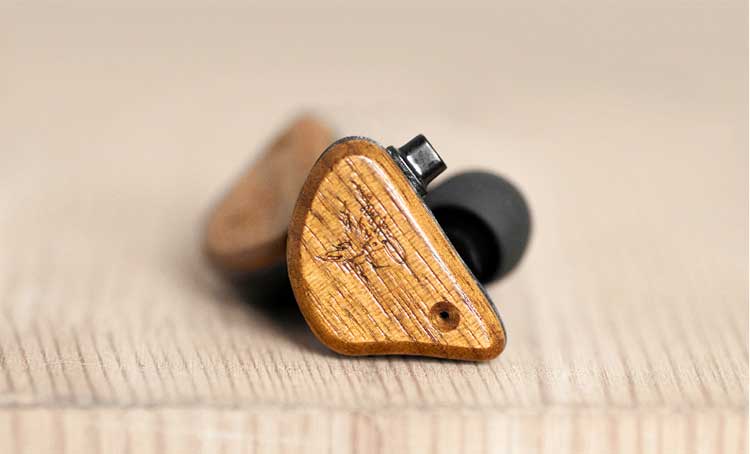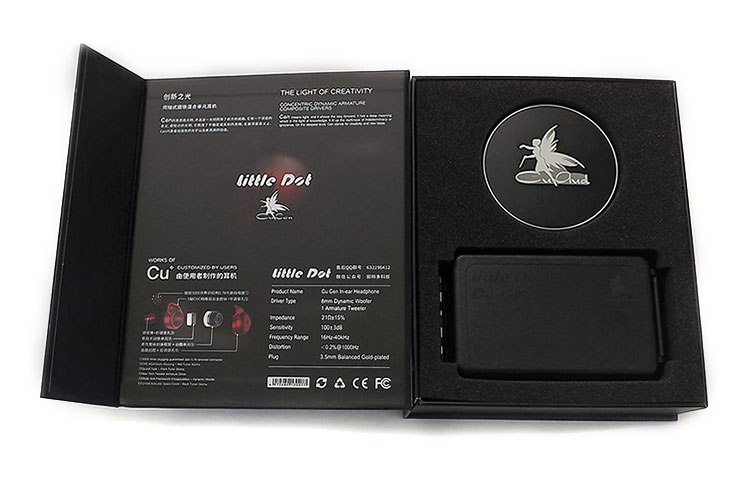The Little Dot Cu Cen is a dual driver universal IEM featuring a soft-frame encapsulation coaxial 8mm diaphragm and a single balanced armature. It is priced at $529.99
Disclaimer: The Little Dot Cu Cen sent to us is a sample in exchange for our honest opinion in this review. We thank the team at Little Dot for giving us this opportunity.
To read more about Little Dot reviews previously done on Headfonics please click here.
Note, this review follows our new scoring guidelines for 2020 which you can read up on here.
Product Introduction
The bell rang and it is round three of our four-round bout and Little dot Audiophile journey and it is now the Little Dot Cu Cen that will step into the ring. Little Dot has broken into the US market with Four IEM models and the Cu Cen is the next to their top tier model.
The Little Dot Cu Cen is a two-driver IEM with some unique features and Little Dot markets them as being a great midrange production IEM.
Cen is a letter of the Runic alphabet, and according to Little Dot and their literature, Cen lit the darkness in their Chaotic phase so let us step into the light and see if Cen brings zen.
Tech Inside
There is some pretty unique tech inside the Little Dot Cu Cen starting with the driver array and mounting system.
The Cu Cen has what Little Dot calls a whole soft framework encapsulation + dynamic driver system. The encapsulation suspends the driver in a soft cavity and then they join the two drivers to form a makeshift coaxial type design and Little dot designed this system in this manner to specifically eliminate vibration and Resonances.
A coaxial 8mm diaphragm is the driving force in the bass department and midrange section and sits within the soft framework encapsulation.
The high frequencies are produced by a custom made balanced armature. Little Dot calls it their New Tech tweeter armature driver. I would not expect off the shelf parts at this price range and Little Dot delivers in this aspect.
Design
Anodic Oxidation
Let us get this one fact out there. Little Dot threw the paint out the door when they made the Cu Cen and used a complicated technique to obtain the finish you see. Please keep these away from small children. They look like candy, and if I were one or two years old, I would have probably eaten one, or both.
They look candy good because the shells are not painted. What you see is anodic oxidation on aviation-grade aluminum. The process involves an electrochemical method for the production of an oxide film on the surface of a metallic substrate by removing electrons to oxidize the anode.
Aluminum Shells
The aviation-grade aluminum shells are a unique design. They remind me of a wind instrument shape. Little Dot calls their cover a Curved Acoustic Space cover and their shell a concentric design.
About the only IEM of similar shape, I can think of besides their own Cu KIS is the Ikko OH7 which is almost a thousand dollar IEM with just a single driver configuration. These just have the oxide film and no jewelry engraving which increases cost.
From what I understand, the rounded internal shape has a CNC formed chamber system inside where the driver is in a type of a mini labyrinth type of design and almost bordering a horn design up to the nozzle.
There is also a three vent system on each earbud. They are placed in very inconspicuous places, and thankfully, the facia is kept pristine to give enough room for the Little Dot Fairy logo.
Comfort & Isolation
There is not much to say. The Little Dot Cu Cen is a comfortable IEM which is very light and has a long output stem.
This particular design barely touches your ear and once you find a well sealing flange, you will feel the cable ear loop more than the IEM even though the cable ear loop is not fixed or a memory wire and is quite soft.
Isolation is also average and once you find a good sealing flange, you could expect an average amount of passive noise isolation.
Cables & Connectors
The Little Dot Cu Cen comes with a good cable setup in my opinion. Little Dot uses their sleeve system design with a 5000 times plugin guarantee to connect these IEMs to the removable cable which uses the standard size .78 dual pin connector.
The cable uses a 3.5mm 4 pin TRRS plug and yes, that connection is somewhat rare but, it also comes with a 45-degree angled adapter that takes it to a 3.5mm TRS 3 pin connector.
They use a quality 3.5mm metal connector with some other parts made of plastic but they feel good enough. The cable itself is an eight-core braid OFC dipped in silver with transparent insulation. It is quite good looking I must say and is flexible with zero microphonics but no mic.
Adaptivity
There are also two more adapters besides the angled adapter that is included to convert the 3.5mm TRRS to a TRS, you get two more that converts the TRRS 3.5mm plug into a 4.4mm Pentaconn and a 2.5mm balanced plug, both identical with the 45-degree angle.
The only type of connectivity that is not covered by this setup is the standard 6.35mm, but everyone should have an adapter by now, and the large XLR is impractical for portable use but an adapter is commonly available if you need to go that route. Many modern amps now have an XLR connection.
Accessories
Little Dot includes 2 carrying cases. They include a hockey puck style case and a mini black Pelican style case as well and you will need them, to put all the unused accessories. The hockey puck style case is made of metal and It feels to me like aluminum. The twist-off top cover is black and decorated with the Little Dot fairy logo.
The mini Pelican style case is made of hard black plastic with the product information etched onto the top cover. It all comes in a well-illustrated box with a magnetic locking flap that opens to reveal the contents. You will also find 3 sets of rubber flanges, 3 spin fit flanges, and 3 sets of foam flanges along with a wire clip.
Sound Impressions
Initial Impressions
Little Dot calls the Cu Cen a good IEM for vocal production. I started to agree once I heard this IEM for a while. The midrange production is smooth, though a touch forward and up close, slightly warm, and neutral in tonality. In actually, that describes this IEM.
But what about the rest of the spectrum? After all, this is a five hundred dollar IEM, right? My apologies but once again I have to disagree with Little Dot as in the previous review because this IEM does more than vocals well.
Before getting into details, I ran the tone generator sweep as always and noticed right away a dominance on the left side at 3.3khz. Then it becomes right-side dominant at 3.6khz to 5khz. That one is subtle but it’s there. It was about a 2-decibel difference to my ears. But not a big deal when listening to music. The full frequency spectrum is reproduced fairly evenly.
The Little Cot Cu Cen did go to both extremities fairly well. It audibly went way below 15hz and surpassed my hearing capabilities up in the high frequencies.
Sub Bass
As noted above, these can dig down into the lower frequencies with no problems. You do not get big gobs of bass with the stock sound, because the tuning is on the lean side with a small elevation in the midbass, and similar to most IEMs, the lower ranges are just audible but not felt.
Under the lean sounding bass, there is a very pleasant bass that only needs a touch of elevation to be where I like it. Once some EQ is introduced, the bass becomes satisfying and some of the visceral qualities start to come through.
Bass
Fairly tight and fast is how I would describe the bass response of the Little Dot Cu Cen. These can do bass as well as vocals.
These can take a boost like a champ too. Once you boost that bass a touch you get lots of it. It never interferes with the lower midrange either. I just wished there was a touch more slam but the good dynamics compensate some.
The bass is not a bloaty, fat bass type but rather neutral and with a splash of fun, and once you boost it a hair there is an ample amount of body. You will hear every note.
Just listen to “We No Speak Americano” and turn up the bass on these and you will realize these can do bass. You could hear with the Cu Cen that the bassline is not monotoned but there is a clear three-note switch up unheard in inferior IEMs besides having an additional multitone thump.
Midrange
This is where most of our audible range is and there is so much to say here but in a nutshell, the Little Dot Cu Cen does it very well.
The midrange is center stage and fairly flat, but not overly sterile, and although it is somewhat forward. It has its restraint with a very good tonality and pitch. I rarely said to myself something sounds off or is bothersome. The midrange rarely sounds harsh even at very high volume levels. I never cringed on shrill notes.
There is good detail because I could actually hear the wind going into the instruments and microdynamics are fairly present with a lot of detail.
Upper Midrange
The midrange on the Little Dot Cu Cen is flat to about 3khz where there is a small peak and it smooths out after that. This small peak brings out some presence in the midrange.
Most flat-sounding IEMs take on a forward presence which these do have in the midrange but the upper portion is slightly more forward compared to the lower midrange and this adds even more presence to these IEMs.
I started describing the midrange as smooth so I decided to put these to the test with some Slipnot. Yep. Will they lose coherence? They never did. “Spiders” by Slipnot was an experience. It sounded expansive, with an almost omnidirectional character on the Cu Cen.
Then I went further to try and trip up the Cu Cen up and got some older Slipnot and played “Disasterpiece” and once again, coherent through the song and if you know the song then you know that is a feat which is hard to do. The midrange can handle complexity. Detail? I heard a lady screaming when he sings the ending “I’m not supposed to pay” chorus I never heard before.
Too hard for you? So I decided to play some classical and it did even better when I played some Lord of the Ring soundtrack. Talk about contrast. But what a beautiful contrast and yes, I am a LOTR fan.
“Prologue: One ring to rule them all,” said it all. It was a dynamic experience. horns, Violins, and all the contents were distinct and I felt the wrath of the Nazgul. The flute on “Bag End” sounded surreal and very airy.
Treble
The Little Dot Cu Cen has highs that have restraint as if the tuning pulled them back just a couple of decibels and just enough as for them to never sound harsh, become sibilant, or shrill or overexert themselves.
They have a presence that resides behind the midrange but even though slightly recessed, remains sharp and crispy with plenty of airiness. The highs have a sweet-sounding character. The softness of the highs almost puts these into a warm sounding IEM category if it was not for the forwardness of the midrange.
Final Sound Impressions
The Little Dot Cu Cen is a very dynamic IEM with a forward sounding but somewhat restrained from hurting your ears midrange, bass that likes to be tickled with a boost, and crispy highs that sit in the rear with the gear.
These also do resolution very well as I can distinguish every sound in a recording and every sound has a good sense of separation from one another.
The Cu Cen transient response is very good with a good attack and decay. These are a good choice for most music. I enjoyed them with all kinds of genres from classical music with a stage full of natural wind instruments to Hard Rock but would not hesitate to put on some EDM, some Hip Hop, or even some Jazz.
They are generally good and feel at home with almost any genre and I think that is their major appeal.
So far from the three Little Dot IEMs reviewed, these seem to be the choice for a flatter and a more accurate frequency response curve.
Staging
I would not consider the Little Dot Cu Cen to be the best IEM for soundstage in particular. I would say good, but not great. The staging here is mostly up close and personal.
Yes, they image fairly well but have an up-close sounding stage that keeps things nearby and I think the forwardness in the midrange is responsible which then becomes their own Achilles heel in staging. There is placement but there are better in this area.
The stage is not too wide with a touch of height and a medium amount of depth. These can rear project when needed to. The imaging is pretty accurate when it needs to be.
Synergy
I threw every amplifier I have at the Little Dot Cu Cen and they mostly produced music that was satisfying in volume. My Motorola phone pushes them fine but left some desire for more volume. The Cu Cen is not the most efficient IEM at 100 decibels with an impedance of 21 ohms which is the highest in the Little Dot line.
However, these scale very well with higher amplification. I used everything from a Zorloo Ztella, IFI Zen Can, and a Zen Dac, plus a Schiit Asgard. Every time power went up, so did fidelity.
These little guys like power and I am guessing its why Little Dot includes balanced connectivity. I like the fact that I could pop in an adapter and use different connectivity when I want.
I liked the rubber flanges best with a small output hole because with the other types I felt they sounded too thin and shouty, plus the small hole rubber flanges augment the bass which is needed to recuperate the lower portions of the bass.
Selective Comparisons
Anew X-One
Technical
The Anew X-One was reviewed recently and almost rival the Cu Cen in sound quality. They are almost 100 dollars cheaper though at $320 US dollars but are very competitive. The Cu Cen is being offered ATM at $414.99.
Construction is different although they are both made of CNC formed Aluminum. They both have a decent cable but the Cu Cen has better connectivity. The X-One has a better quality cable.
You might like the fact that you get three different sound signatures with interchangeable modules that also look good with the X-One.
Sound
The Anew X-One midrange is wider with a better ability to place the sound where they belong. The soundstage is better and for less money. Both are tonality wise similar.
The Cu Cen is more up close and personal. Do you want a wider, more expansive soundstage or do want the intimacy of being in a closed space like a Jazz club or somewhere similar? The Cu Cen recreates that better.
The Cu Cen and has a cleaner bassline but are similar in the sense that they both are slightly elevated in the midbass region and recess the bottom octave but both are very capable of some deep bass once you use an equalizer.
The highs are comparable but the Cu Cen has an edge with a touch more cleanliness but is slightly more recessed. They both retrieve microdetail well, especially in the midrange but the Cen has a higher capability in that respect.
Little Dot Cu Wyn
Technical
Right below in the Little Dot line in price is the Little Dot Cu Wyn at $159. There is a large contrast between the two and looking at them you would never guess they came from the same manufacturer except for the Fairy logo which is the only visual giveaway.
The contrasts are not only in looks but also in the amount and quality of accessories. You get fewer flanges and the wire is in a different league. You also get one case instead of two.
Rustic or Robotic? Construction on the Cu Wyn is rustic with an almost wild west design. The Cu Wyn however has one advantage in the fact that they are one of the lightest IEMs I have in my collection and this fact makes them comfortable to a high degree.
Sound
Again, in a blind sound test most people would say that both are made by a different manufacturer because the Cu Wyn has a warm, V-shaped bass prominent sound that is relaxed with a decent amount of detail, and on the opposite side, the Cu Cen has a brighter signature with a forward midrange and more vivid sound with higher levels of detail.
Detail, special information, and similar aspects of the sound signature of the Cu Wyn are restrained in staging and seem to create a smaller, more personal space which is relaxing, almost opposite to the Cu Cen which creates a larger space.
You do get a higher level of detail with the Cen plus a smoother and more detailed midrange response. However, for those easy-going moments, the Cu Wyn would work.
Our Verdict
The Little Dot Cu Cen is a unique looking IEM and the sound signature tends to grow on you. When I first got them I said to myself these do not look the expensive part and I did not have high hopes until I heard them after a long period of burn-in time.
Once I heard that luscious midrange that never lost coherence, the fat bass once I turned up the bass, relaxed clean highs, and once I realized these were an all-around good sounding IEM with lots of detail, good with all genres and with little flaws in the sound signature that is when I fell into place with the Cu Cen.
Some might feel the midrange is pushed too forward but I think is at the edge and just right if you want the midrange as the staple. These would be perfect for the warmth of a tube amplifier. No surprise from an IEM made by Little Dot.
The Cu Cen is a good-looking, well-accessorized fun sounding IEM with lots of connectivity options and I can clearly say, these little red devils are good, really good.
Little Dot Cu Cen Specifications
- Connector Type: CIEM 0.78mm 2 Pin
- Drivers: Soft-Frame encapsulation coaxial 8mm diaphragm and Armature
- Distortion: <0.2% @ 1000hz
- Plug: 3.5mm balanced, 3.5mm single-ended, 2.5mm balanced, 4.4mm balanced
- Frequency Range: 16hz to 40khz
- Sensitivity: 100 +/- 3db




